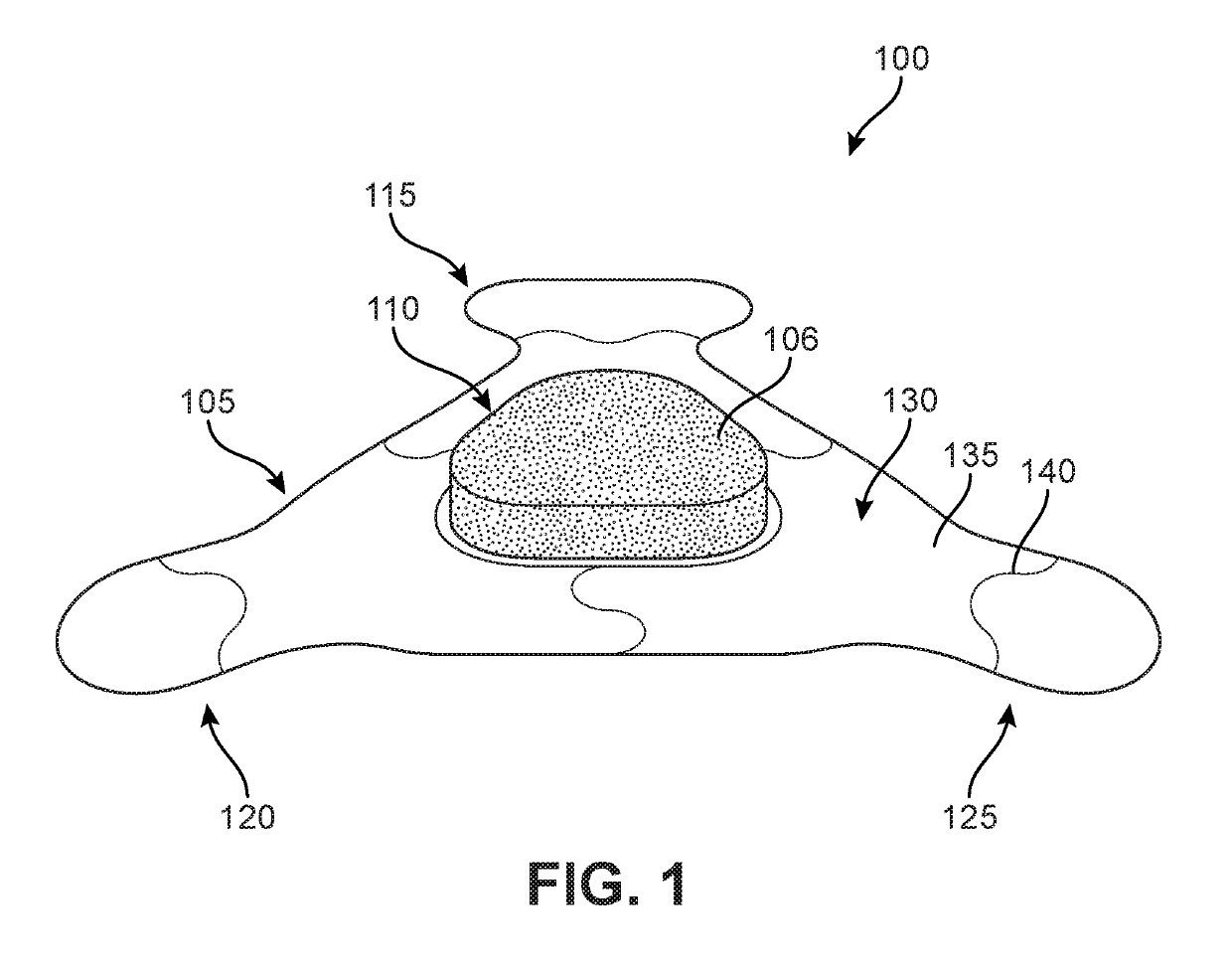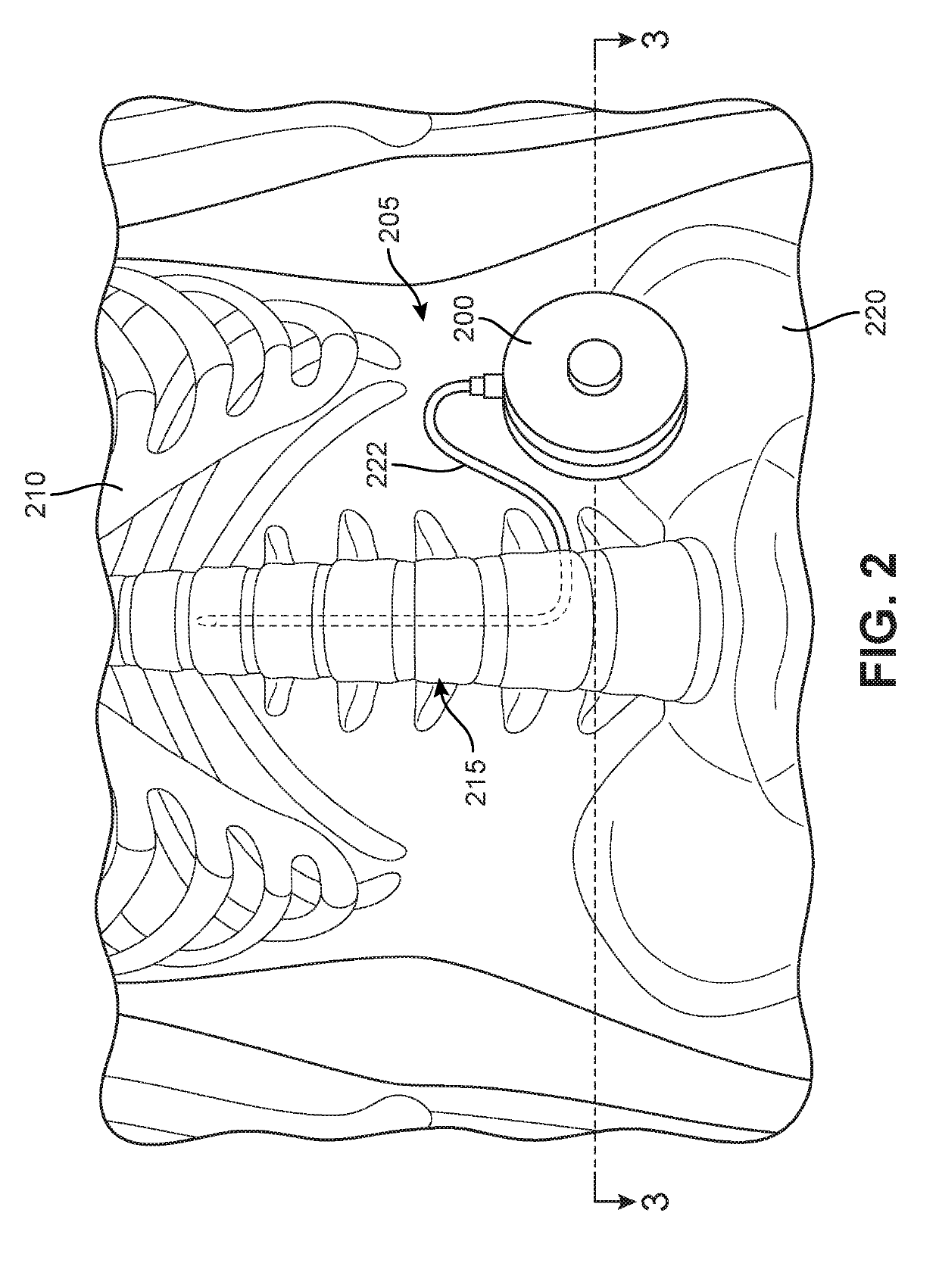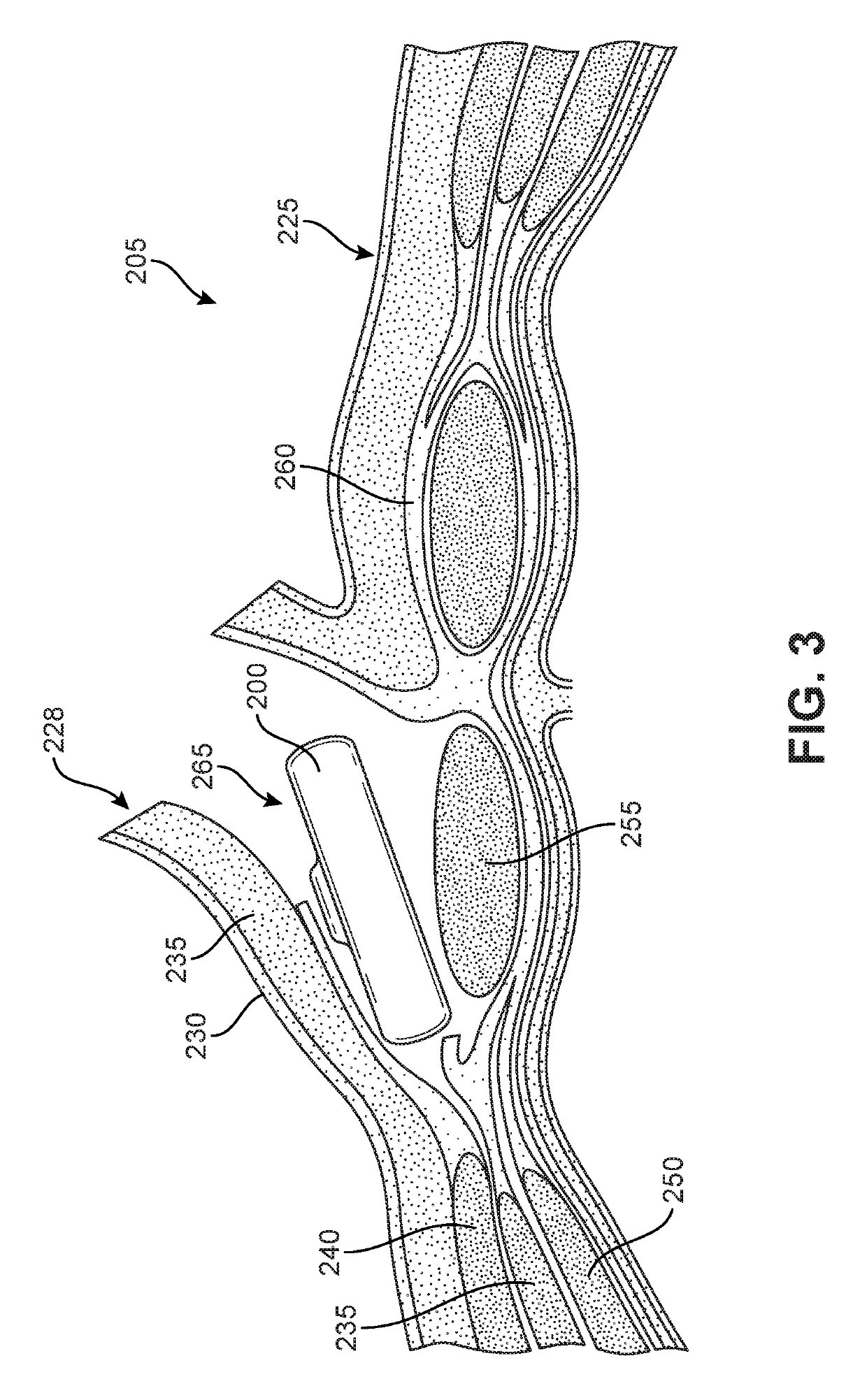Pressure Bandage
a technology of pressure bandage and surgical pocket, which is applied in the field of pressure bandage, can solve the problems of high percentage of pocket infections with poor outcomes, traumatic pocket creation to the tissues surrounding the implanted device, and clinicians typically having to gather the components
- Summary
- Abstract
- Description
- Claims
- Application Information
AI Technical Summary
Benefits of technology
Problems solved by technology
Method used
Image
Examples
Embodiment Construction
[0038]There are several processes by which fluids may collect in the tissues of the body in the area of a wound site, whether the wound is incurred accidentally via trauma or purposefully, such as by a surgical procedure. For surgeries that involve the implantation of a device (e.g., subcutaneously), the pocket formed in the tissue to receive the device may provide a cavity in which the fluids can collect, causing pain and swelling.
[0039]Via one physiological mechanism, the surgical procedure can damage blood vessels in the tissue. If there are tears or other damage in the walls of the blood vessels, blood can directly escape into the surrounding tissues. This can result in hematoma at the surgical site. A hematoma is a collection of blood in dead space in the body. A hematoma, whether caused by trauma or surgery, can be caused by a small blood vessel being opened to the surrounding tissue. Hematomas may sometimes need to be drained because they can be painful, lead to scarring, and...
PUM
 Login to View More
Login to View More Abstract
Description
Claims
Application Information
 Login to View More
Login to View More - R&D
- Intellectual Property
- Life Sciences
- Materials
- Tech Scout
- Unparalleled Data Quality
- Higher Quality Content
- 60% Fewer Hallucinations
Browse by: Latest US Patents, China's latest patents, Technical Efficacy Thesaurus, Application Domain, Technology Topic, Popular Technical Reports.
© 2025 PatSnap. All rights reserved.Legal|Privacy policy|Modern Slavery Act Transparency Statement|Sitemap|About US| Contact US: help@patsnap.com



